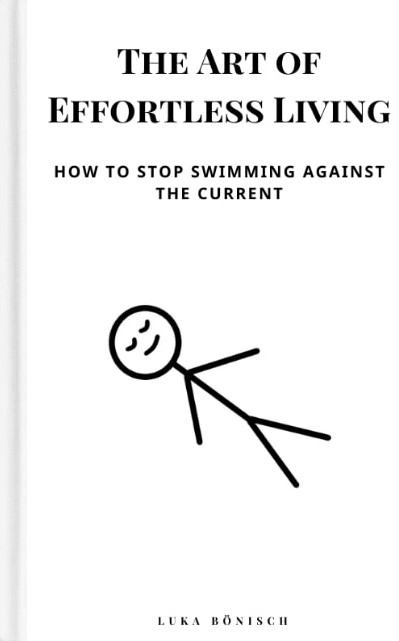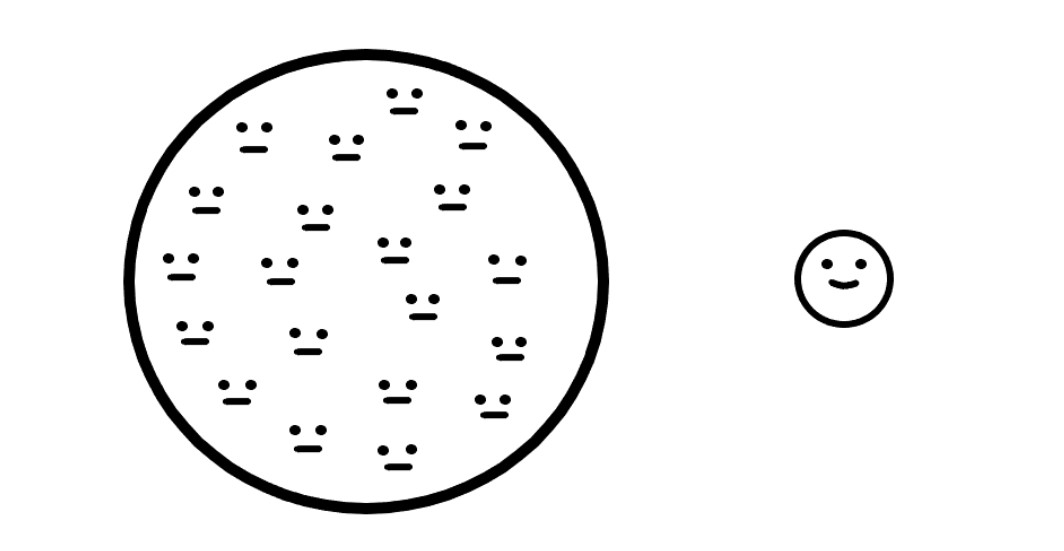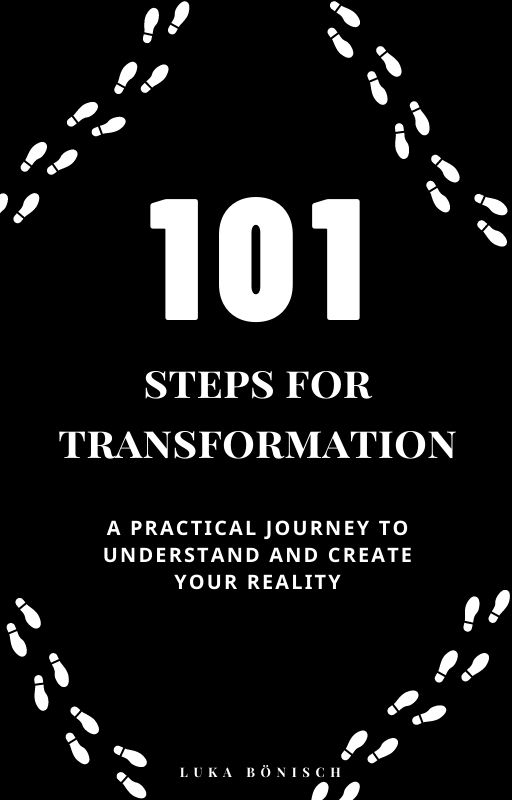“Until you make the unconscious conscious, it will direct your life and you will call it fate.” – C.G. Jung
What is The Process of Individuation?
In his years of dream interpretation, Carl Jung discovered that dreams follow an arrangement or pattern. And this pattern is what he called “the process of individuation.”
Individuation is defined as self-actualization through the integration of the conscious and the unconscious.
It is the process of becoming a fully integrated human being by seeing all the parts of our personality we are currently unaware of.
For this process giving attention to dreams is very useful. If you observe your dreams long enough, you will start to see a pattern. This dream pattern is representing your psychic growth.
But first, the ego, which can be considered as your conscious self, has to make an effort to listen to the messages from the unconscious. The ego must want to discover and listen to the Self (with capital S), which can be seen as the essence of the psyche.
With this, the goal is to make the psyche whole.
It’s important to note that the individuation process is unique to every one of us. While guidance by a teacher or master can help, it won’t do you any good trying to copy their individuation process.
The only real guide is the Self, your inner being.
What Does The Individuation Process Look Like?
Usually, the process of individuation starts with a call. This call often comes in the form of a wounding of the personality and its accompanying suffering.
Yet, this call is often not recognized. If unrecognized, we project our suffering onto the world instead of taking responsibility.
To take responsibility we have to understand the three archetypes that play a crucial role in everyone’s individuation process.
The Shadow
“How can I be substantial if I do not cast a shadow? I must have a dark side also If I am to be whole.” –C.G. Jung, Modern Man in Search of a Soul
The initial encounter with the Self casts a shadow. And facing this shadow is exactly what is difficult for many of us. When you encounter the shadow archetype, the only thing that works is to face it.
Your shadow represents all the personal traits you have ignored, denied, or cut off from yourself.
For instance, you might see someone failing at something, and, as a result, you experience a brief feeling of satisfaction. But because you consider this feeling inappropriate you quickly suppress it.
The shadow just as often shows up as an impulsive act. Before you can even think about it the evil remark pops out, the plot is hatched, or the wrong decision is made.
And then you will have to deal with the consequences.
Observe your feelings and emotions for one day and you will see your shadow peeking around the corner in many situations.
Here are a few more examples of how your shadow expresses itself through your emotions:
- Being angry at someone for being lazy.
- Being defensive when someone criticizes your work.
- Being vengeful when your partner breaks up with you.
- Being prideful when someone compliments you.
Usually, the above comes with the denial that this is what you are experiencing. As long as you deny the shadow’s existence, however, your individuation process cannot proceed.
Another way you can see your shadow in action is if you observe your own unconscious tendencies in others.
This is called projection, which is the reason for many political problems, gossiping, and spoiled relationships.
To avoid this, you have to be willing to look at all the darkness inside yourself.
But by knowing about the shadow, you have already progressed a good bit, because most people are not even aware that there is a shadow controlling their actions.
The shadow is like a human being you have to get along with.
Sometimes you have to give in, sometimes you have to resist, sometimes you have to give love. The shadow becomes hostile only when ignored or misunderstood.
Whether the shadow becomes our friend or enemy depends largely upon ourselves.
The Anima / Animus
The anima is a personification of female tendencies in men; the animus a personification of male tendencies in women.
Jung saw the anima/animus as essential building blocks in the psychic structure of every man and woman.
Like the shadow, the anima/animus archetype has to be integrated for the process of individuation to progress. What this means is to no longer be partially identified with the anima/animus.
A pitfall is to become possessed by the anima/animus which leads to destructive tendencies and behaviors.
This is often seen in intimate relationships.
When one partner is possessed by the anima/animus archetype, the other may be so irritated by it that he or she automatically becomes possessed too. The results are disagreeable and emotional conversations on a very low level, where you can’t find any common ground.
The relationship to the mother (for men), and to the father (for women) shape the character of the anima/animus. Hence, both, the anima and the animus can have positive and negative sides.
The Anima
In the positive aspect, the anima is a guide to the inner world and the Self.
In the negative aspect, the anima may express itself in irritable and depressed moods, uncertainty, insecurity, and touchiness.
To experience the anima as the “woman within” conveying messages from the Self, the man has to decide to take his fantasies and feelings seriously. This is vital for the process of individuation.
The Animus
In the positive aspect, the animus is a mediator of spiritual experience, giving a woman invisible inner support and spiritual firmness.
In the negative aspect, the animus cuts a woman off from the reality of life and leads to secret destructive attitudes.
When a woman questions the sacredness of her inner convictions, she will be able to receive the suggestions of her unconscious; especially those contrary to her animus’s opinion.
This is where the manifestations of the Self will get through to her and she’ll be able to understand them.
The Self
“The self is not only the centre but also the whole circumference which embraces both conscious and unconscious; it is the centre of this totality, just as the ego is the centre of consciousness.” – C.G. Jung
In Hindu philosophy, the Self is your core, your essence, your soul. This is your true being, the source of original creativity, and the part you want to give your attention to.
For Jung, the Self represented “the totality of the whole psyche” and the center that organizes psychic growth.
In dreams, the Self often takes the form of a wise old man or wise old woman. In the book Man and His Symbols, Marie-Louise von Franz connects the Self to the Cosmic Man that appears in many religious teachings.
Usually, the Cosmic Man is described as a helpful and positive gigantic human being embracing and containing the whole cosmos. When this symbol appears in a dream, you can expect a creative solution to a problem, as the vital psychic center is now activated.
This Self already knows who you are supposed to be. It knows your talents, your abilities, and your purpose. When you learn to hear the Self, you’ll have your own personalized compass.
Yet, few people ever encounter the Self.
The willingness of the ego to listen to the messages of the Self determines how far the Self emerges.
In spiritual teachings, the ego is often seen as an enemy that has to be “killed.” However, some part of it wants to help complete the process of individuation.
But for this to work the ego must give itself to that inner urge toward growth.
The ego lights up the entire system and thus brings everything into consciousness.
If you, for instance, have artistic talent but the ego is unaware of it, it may as well be non-existent. Hence, the ego serves to bring the unconscious into reality.
Nonetheless, the guiding impulses don’t come from the ego, but from the Self.
Sometimes everything unknown to the ego gets mixed up with the shadow, and this can include the highest and most valuable sources.
Other times, however, the Self and shadow are pointing in the same direction. This is where you have to live out something that seems dark but actually may not be.
Usually, at the bottom of your being, you already know where to go and what to do. But the ego voice we call “I” is often so distracting, that we cannot hear our true inner voice.
Refusing The Call to Individuate

With time the call to individuate will get louder and louder. In the last stages, you may experience intense dreams and strong emotions. This is the last effort of the Self to get your ego’s attention.
If you refuse the call to individuate the call may disappear. But if the ego is truly ready to listen, it’s never too late to make an effort to hear the call, even if it’s just a whisper.
Now you might wonder why someone would refuse the call. Good question. Well, the answer is that it takes courage.
You’ll have to leave your comfort zone and possibly do things you have never done before. You’ll have to break up old patterns and perhaps old relationships that no longer serve you.
Your ego might want to go out with your friends but your Self clearly tells you to stay home and do creative work.
The individuation process can liberate us but it’s not a “safe path.”
When you go down this path you’ll have to strip away all the false identities the ego has built over the years. And the ego will most likely react with fear.
This is why many people never fully individuate. Instead of confronting the fear, they turn and run away from it, not seeing that turning towards it will lead you to the Self.
Ultimately, refusing the call to individuate is refusing to become your true Self – the individual you that you were meant to be.
“The way is not without danger. Everything good is costly, and the development of the personality is one of the most costly of all things.” – C. G. Jung, The Secret of the Golden Flower
Tools for the Individuation Process
How do we proceed on this journey toward becoming a fully integrated human being?
Jungian psychology offers two related methods for this process: dream work and active imagination.
A third method, not specifically mentioned as a tool in Jungian psychology, though not the least bit useful, is creative work.
Dream Work
Dreams are the playground of the unconscious and conscious mind. Through dreams, the unconscious mind communicates with the conscious mind.
Because the Self doesn’t communicate in language, it uses symbols and images to convey messages. What this means for you is to pay attention to your dreams.
Record your dreams and start interpreting them. Pay attention to what feels important and see if there is a pattern emerging.
It can be helpful to consult a dream analyst but you can also just be your own analyst. You will see that with time you’ll get better at interpreting your dreams’ meaning. After all, you’re the expert of your own experience.
After two years of paying attention to my dreams and recording them, I can say that it’s a very interesting and enjoyable habit.
Apart from the state of your psycho-spiritual development dreams can tell you much more. You can read my article about this topic here.
Active Imagination
Active imagination is another way to tune into the conversation between the unconscious and conscious mind.
The difference is that you are awake during active imagination.
So instead of going into a dream, you go into your imagination. Essentially, it’s a meditation technique where you relax and let the content of the unconscious arise.
Here it helps to write down your internal dialogue and to sketch the images that come to mind. When you do so, don’t filter yourself, no matter how strange or inappropriate the dialogue and images seem.
You can also use active imagination to support your dream work.
As soon as you are in a meditative state focus upon a recent dream and let any new images and insights arise. And then, again, record whatever came up.
Afterward, you can channel your inner analyst to find the deeper meaning.
Creative Work
For years I didn’t have a creative outlet. I felt a slight urge to create here and there but the intention was not strong enough.
However, when the call to create was finally strong enough, I bought a canvas and some colors and started to paint.
To this day painting is one of my favorite means of expression; later, writing has joined.
This has transformed my life.
Through creative expression, I feel more alive, more fully human. Creative work will bring you more in touch with the Self, as the spring of creativity is beyond the rational mind.
Whenever you create something, your state of consciousness is echoed by your creation. Reflecting on your creative works is a way to observe your psycho-spiritual development.
Jung encouraged drawing mandalas as a way to provide a sacred space into which we can invite the Self.
The mandala is an “archetype of wholeness” and encountering it in dreams, for instance, indicates progress to new self-knowledge. He also observed that mandalas are a natural part of the individuation process and encouraged drawing them spontaneously.
I have found that drawing mandalas has a calming and focusing effect on my psychological state. It’s something I come back to whenever I want to detangle some psychic knots.
Jung created mandalas regularly:
“I sketched every morning in a notebook a small circular drawing, a mandala, which seemed to correspond to my inner situation at the time… Only gradually did I discover what the mandala really is: … the Self, the wholeness of the personality, which if all goes well, is harmonious.”
Drawing (mandalas) is beneficial for the process of individuation, however, you don’t have to limit yourself to mandalas or drawing.
Find something that resonates with you. If you like to do woodwork, great; if you like to dance, amazing; if you like folding origami, awesome.
Your creative outlet is not as important as being creative; start to create something.
If you struggle with creativity, check out my article on how to be more creative.
Individuation: Becoming Whole
Realize that the most rewarding task you can ever do is following your unique process of individuation. If you do so your life will take on a whole different meaning.
You’ll no longer be steered by neurotic behavior. A sense of peace and purpose will prevail. You’ll feel whole and fulfilled.
But the process of individuation is only real if you make a conscious connection with it.
Pay attention to your dreams, your emotions, your intuition, and spontaneous hinges. And more so, dare to follow them. Even if it means confronting fears and worries.
Don’t allow your ego to make all the decisions. Instead, trust that your Self knows the way even if you can’t see it.
△△△
The individuation process is the process of becoming a fully integrated human being.
Fully integrated human beings are not a perfected breed of humans, they are normal and natural people who live from the awareness that everyone and everything is interconnected, and we all exist for a reason.
“Our “job,” our intention as spiritual beings in a body, is to express our true nature – to fully know ourselves as expressions and individuations of the Divine.” – Neale Donald Walsch
Luka
Latest posts by Luka (see all)
- No Seeking No Path - April 29, 2025
- Stepping Out of Time - April 22, 2025
- Back to the Basic Point(ers) - April 8, 2025



